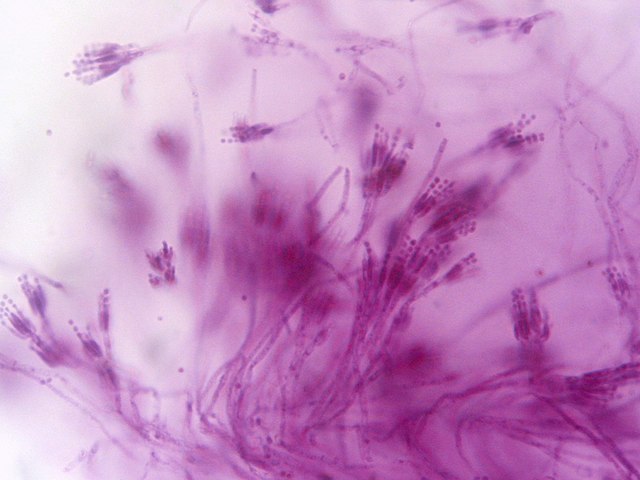Penicillium is a genus of ascomycetous fungi that is part of the mycobiome of many species and is of major importance in the natural environment, in food spoilage, and in food and drug production.
Penicillium
Various fungi including Penicillium and Aspergillus species growing in axenic culture
Some penicillium mold on mandarin oranges, probably Penicillium digitatum.
Penicillium sp. under bright field microscopy (10 × 100 magnification) with lactophenol cotton blue stain
Ascomycota is a phylum of the kingdom Fungi that, together with the Basidiomycota, forms the subkingdom Dikarya. Its members are commonly known as the sac fungi or ascomycetes. It is the largest phylum of Fungi, with over 64,000 species. The defining feature of this fungal group is the "ascus", a microscopic sexual structure in which nonmotile spores, called ascospores, are formed. However, some species of Ascomycota are asexual and thus do not form asci or ascospores. Familiar examples of sac fungi include morels, truffles, brewers' and bakers' yeast, dead man's fingers, and cup fungi. The fungal symbionts in the majority of lichens such as Cladonia belong to the Ascomycota.
Ascomycota
A member of the genus Ophiocordyceps which is parasitic on arthropods. Note the elongated stromata. Species unknown, perhaps Ophiocordyceps caloceroides.
The "candlesnuff fungus" in its asexual state, Xylaria hypoxylon
The ascocarp of a morel contains numerous apothecia.








